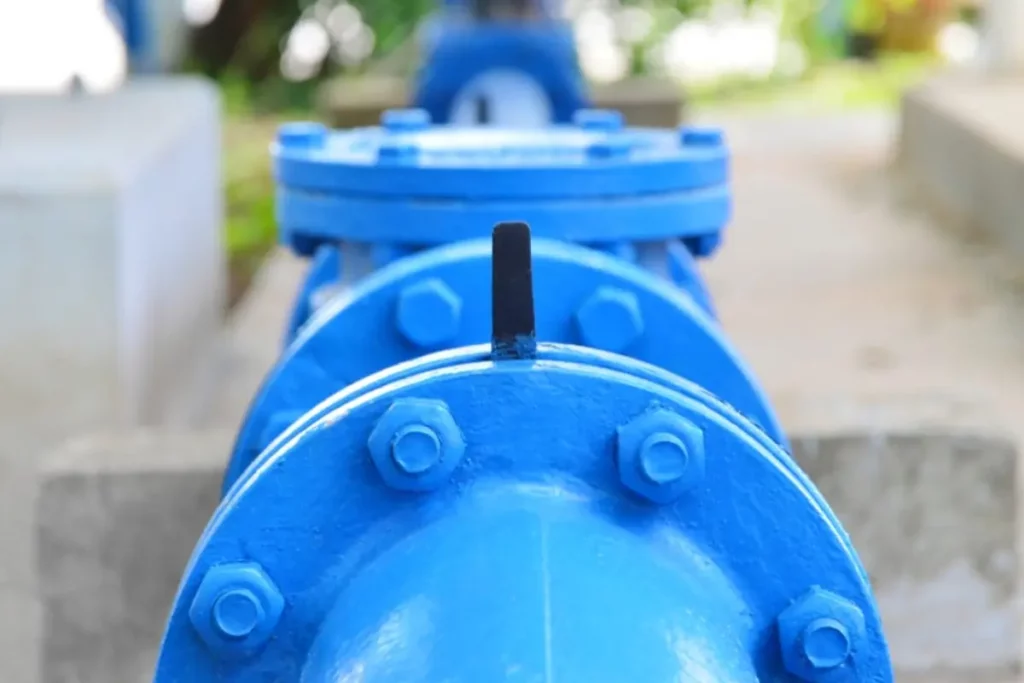The accumulation of air within water piping systems is a problem that can impede the flow, cause inefficiencies and serious operating problems. Air release valves are mechanical devices that automatically release air and gases from water piping systems to maintain safety and efficiency. At John Valves, we’ve seen the power of these devices in enhancing our customers’ systems first hand.
In this article, we discuss the problem with air in water applications and the importance of air release valves for water systems.
How does air get into water applications?
A couple of main reasons listed below are responsible for air in water applications:
- Dissolved air: Water typically contains around 2% dissolved air by volume at standard atmospheric conditions but can contain more at higher pressures. When water flows through a piping system, the dissolved air contained within the water can come out of solution in pumps and different locations along the piping system. This usually happens where turbulence, pressure variations and higher temperatures occur.
- Air enters at the ends: Air can enter water systems at the inflow and outflow locations and remain in the system unless released. Air can also enter at leaky joints, pump glands and other piping fittings that create an entrance for outside air.
- Hydraulic jumps: Hydraulic jumps refer to when liquid at a high velocity flows into a zone of lower velocity. At these locations, turbulence can occur resulting in dissolved air within the water being released.
- Leftover air during filling: Insufficient filling of the pipeline can result in initial air not being cleared out and remaining in the system.
What are air release valves?
Air release valves, also referred to as small orifice air valves, are designed to automatically release pockets of air within a piping system that have accumulated during normal working conditions. They are typically characterised by small orifices, weighted floats and leverage mechanisms, or rubber lined balls that work together to release air at full operating pressure.
Why are air release valves needed in water applications?
Air release valves sit at the top of pipes and other high points in water piping systems. There, they automatically release accumulated air while the system remains operational. To understand why they’re so important, we need to take a look at the problems caused by air in water applications:
The consequences of air in water applications
The presence of air pockets within a water application is responsible for a range of problems.
- Air pockets take up a percentage of the volume and effective cross-sectional area of the pipe. This reduces the water flow capacity through the pipe which can interrupt the water supply.
- Air is usually highly compressed when inside the piping system. So, pockets of air can potentially increase the chances of pressure surges occurring within the system with the subsequent issues of pipe failures, noise, etc.
- The inconsistency of air and water can lead to hydraulic jumps in the system that can cause vibrations and potentially damage the system’s integrity.
- Air can also cause issues with piping system measurement instrumentation and filtering operations.
- The presence of air increases the total headloss of the system, so pumps have to work harder resulting in reduced pump efficiency and an increase in operating energy costs.
Air release valves in water applications
Air release valves have the power to mitigate all of the above problems. You wouldn’t guess it by looking at them though, as their small size doesn’t give much away. Installing air release valves at appropriate locations along a water pipeline can ensure that they release accumulated air and enhance the system’s efficiency. It’s best practice to install them at high points, long runs, adjacent to mainline valves, downstream of pumps and when the pipe slope changes.
Final thoughts
If you use water applications in your business, you may already understand the need for air release valves. Since there are many different types, sizes, and installation points to consider, choosing a solution that meets your needs can be complicated. John Valves have been manufacturing and supplying air release valves for over a century. Contact us to find the best solution that increases safety and efficiency for you.
Read More:

